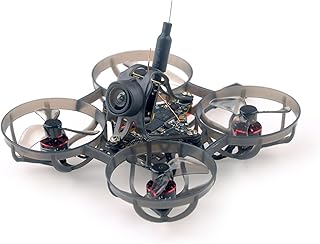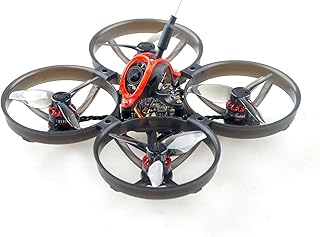SPEEDY BEE Drone: The Impact on the Environment
You've provided the name "SPEEDY BEE" for a drone, which implies its purpose might be related to pollination or agriculture. Let's analyze the potential environmental impact of such a drone, considering various aspects:
Positive Impacts:
* Increased Pollination Efficiency: If SPEEDY BEE is designed for pollination, it could significantly increase the efficiency of this vital process. This could boost agricultural yields and promote biodiversity by replacing traditional methods like beekeeping.
* Reduced Pesticide Use: Drones can be used to precisely apply pesticides, minimizing waste and environmental impact compared to traditional spraying methods.
* Improved Monitoring: Drones can equiped with sensors to monitor crop health, soil conditions, and even detect pests, allowing for early intervention and minimizing damage.
* Sustainable Farming Practices: By automating tasks like pollination and pest control, drones can free up time and resources for farmers, leading to more sustainable farming practices.
Negative Impacts:
* Noise Pollution: Drones can generate significant noise, potentially disturbing wildlife and disrupting natural ecosystems.
* Battery Disposal: The widespread use of drones would create a substantial amount of used batteries. Proper recycling and disposal are crucial to mitigate environmental harm.
* Air Pollution: Drone operation, particularly by large-scale deployments, could contribute to air pollution, especially if reliant on fossil fuel-powered engines.
* Safety Concerns: The integration of drones into the environment poses potential risks to wildlife, especially birds. Collisions and habitat disruption are concerns.
* Impact on Natural Pollinators: While SPEEDY BEE may boost pollination, concerns remain about potential negative impacts on natural pollinator populations, especially if relying on synthetic pollinators.
Considerations for Sustainable Development:
* Biodegradable Materials: Using biodegradable materials in drone construction would minimize long-term environmental impact.
* Renewable Energy Sources: Utilizing solar or other renewable energy sources for drone operation would significantly reduce carbon emissions.
* Sustainable Design: Designing drones with minimal noise output and optimized flight paths to minimize disturbance to wildlife.
* Strict Regulations: Implementing robust regulations to ensure responsible drone operation and minimize negative impacts on ecosystems.
* Research & Development: Ongoing research and development to improve drone technology, focusing on minimizing environmental impact and maximizing positive contributions.
Overall, the environmental impact of SPEEDY BEE drone will depend heavily on its design, intended use, and regulatory measures. While drones have the potential to contribute to sustainable agriculture, careful consideration of potential negative impacts and mitigation strategies is essential.
To provide a more detailed analysis, I need additional information:
* What is the specific purpose of SPEEDY BEE? (Pollination, pesticide application, other tasks)
* What technology is it based on? (Battery powered, fuel-powered, etc.)
* What is its scale of operation? (Single drone, small fleet, large-scale deployment)
* What are the specific features designed to minimize environmental impact?
With more information, we can provide a more accurate assessment of SPEEDY BEE's potential environmental impact.


